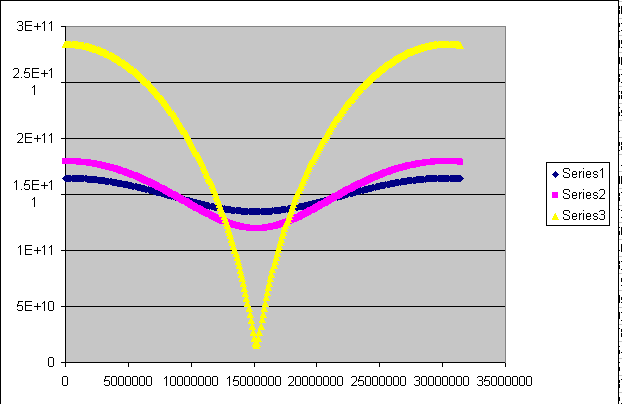A question about orbits: suppose I have a planet orbiting its sun (planet mass ?‰? sun mass, so the sun stays fixed), with semimajor axis a, time period T, and eccentricity e. Given that at time t=0 the planet is at its maximum distance from the sun, what is its distance from the sun at some other time t?
Any help much appreciated, thanks.
Orbit question
-
Hamiltonian
- Posts: 51
- Joined: 27.10.2004
- With us: 20 years 6 months
It looks like all the equations you need to solve problems connecting times and positions in orbit are on this old thread - http://www.shatters.net/forum/viewtopic.php?t=3396, but for your problem (time -> obital position) you need to go backward through all the steps.
Hamiltonian
-
Spaceman Spiff
- Posts: 420
- Joined: 21.02.2002
- With us: 23 years 2 months
- Location: Darmstadt, Germany.
For such a high e there is definitely no easy way. You have to solve Kepler's equation iteratively for each E you want for each M, and you can only get a quick convergence starting with E = M when e < 0.1. For such a high e, you'll need to read off a good starting value from Kepler's graphs (which I can't post here...).
Either way, it's a job best done with a computer programme. Can you write one?
Ever wonder how Johannes Kepler felt about it?
Spiff.
Either way, it's a job best done with a computer programme. Can you write one?
Ever wonder how Johannes Kepler felt about it?
Spiff.
-
tony873004
- Posts: 132
- Joined: 07.12.2003
- With us: 21 years 4 months
- Location: San Francisco http://www.gravitysimulator.com
Here's a graph I put together using Gravity Simulator plotting distance (meters, y axis) vs. time (seconds, x axis). All 3 planets have a semi-major axis of 1 AU around a solar-mass object.
Series 1: ecc = 0.1
Series 2: ecc = 0.2
Series 3: ecc = 0.9
I don't know how to compute it, but there should be a nice simple formula to describe these plots without having to resort to numeric integration (computer method).

Series 1: ecc = 0.1
Series 2: ecc = 0.2
Series 3: ecc = 0.9
I don't know how to compute it, but there should be a nice simple formula to describe these plots without having to resort to numeric integration (computer method).
